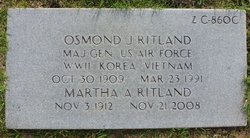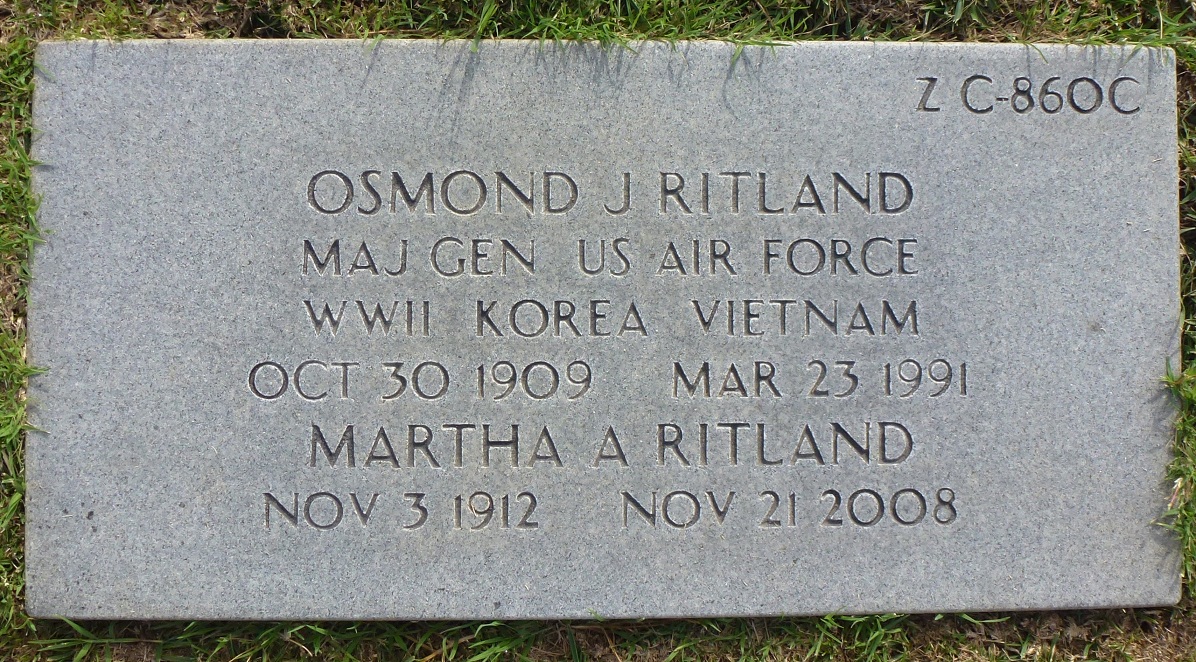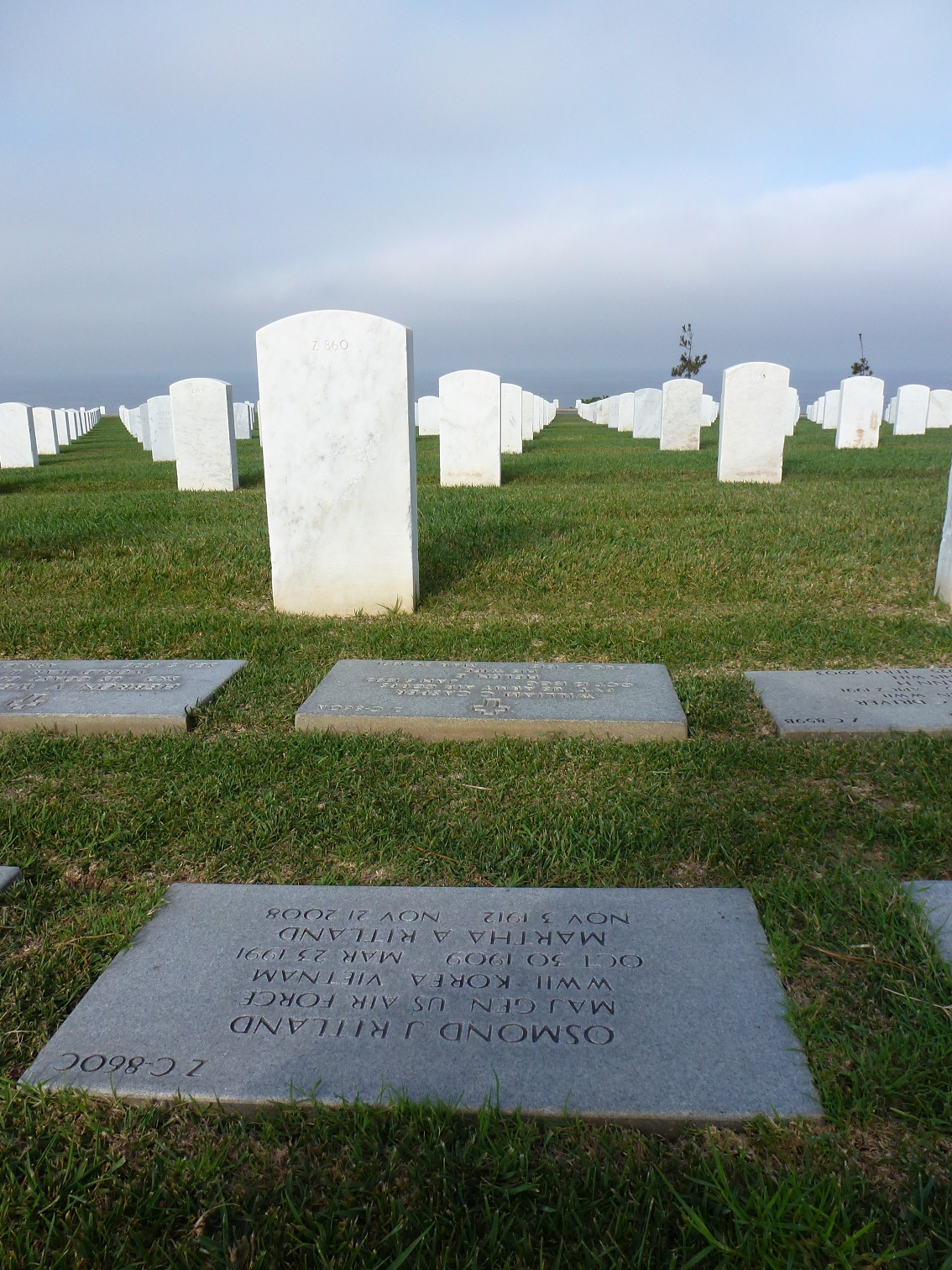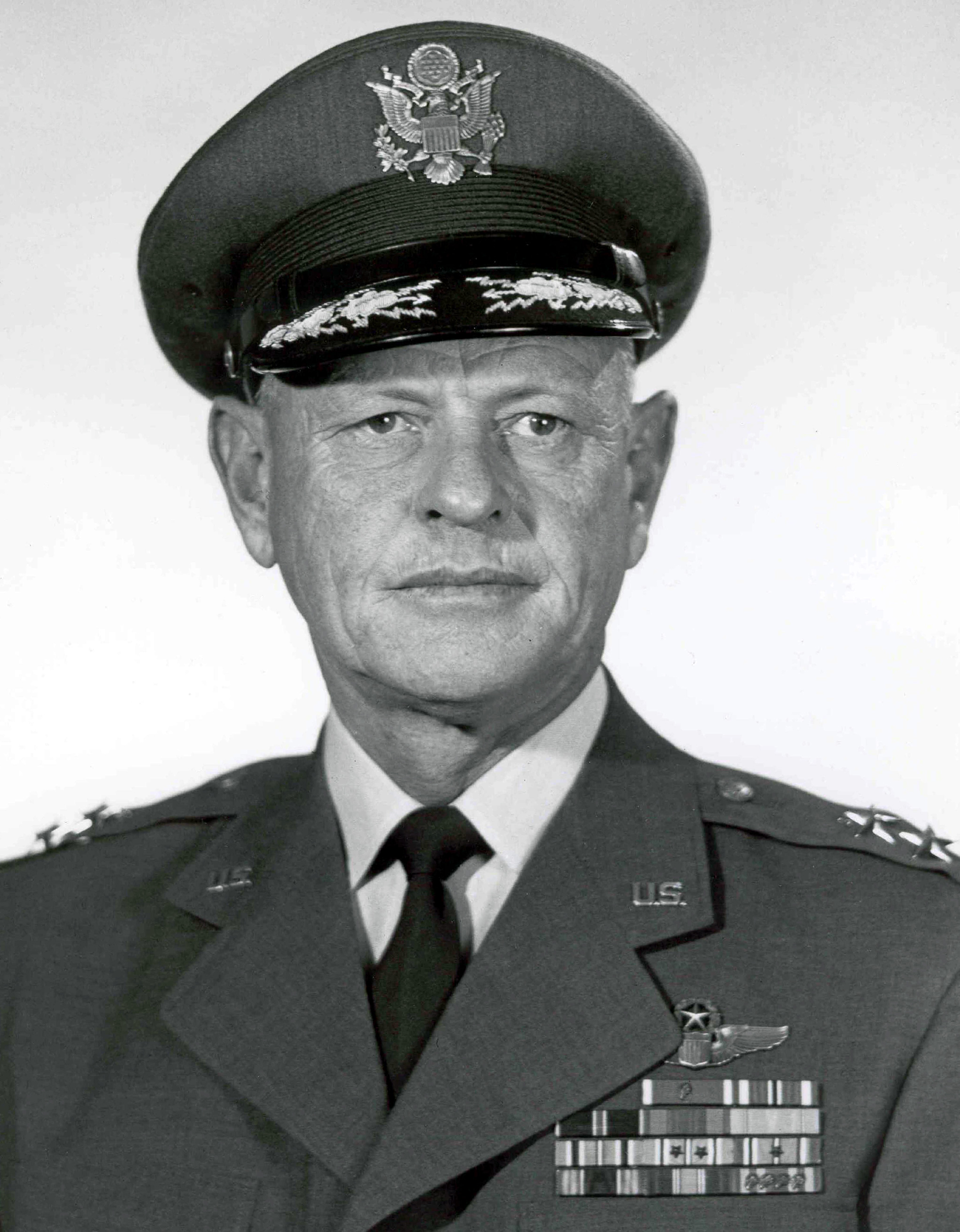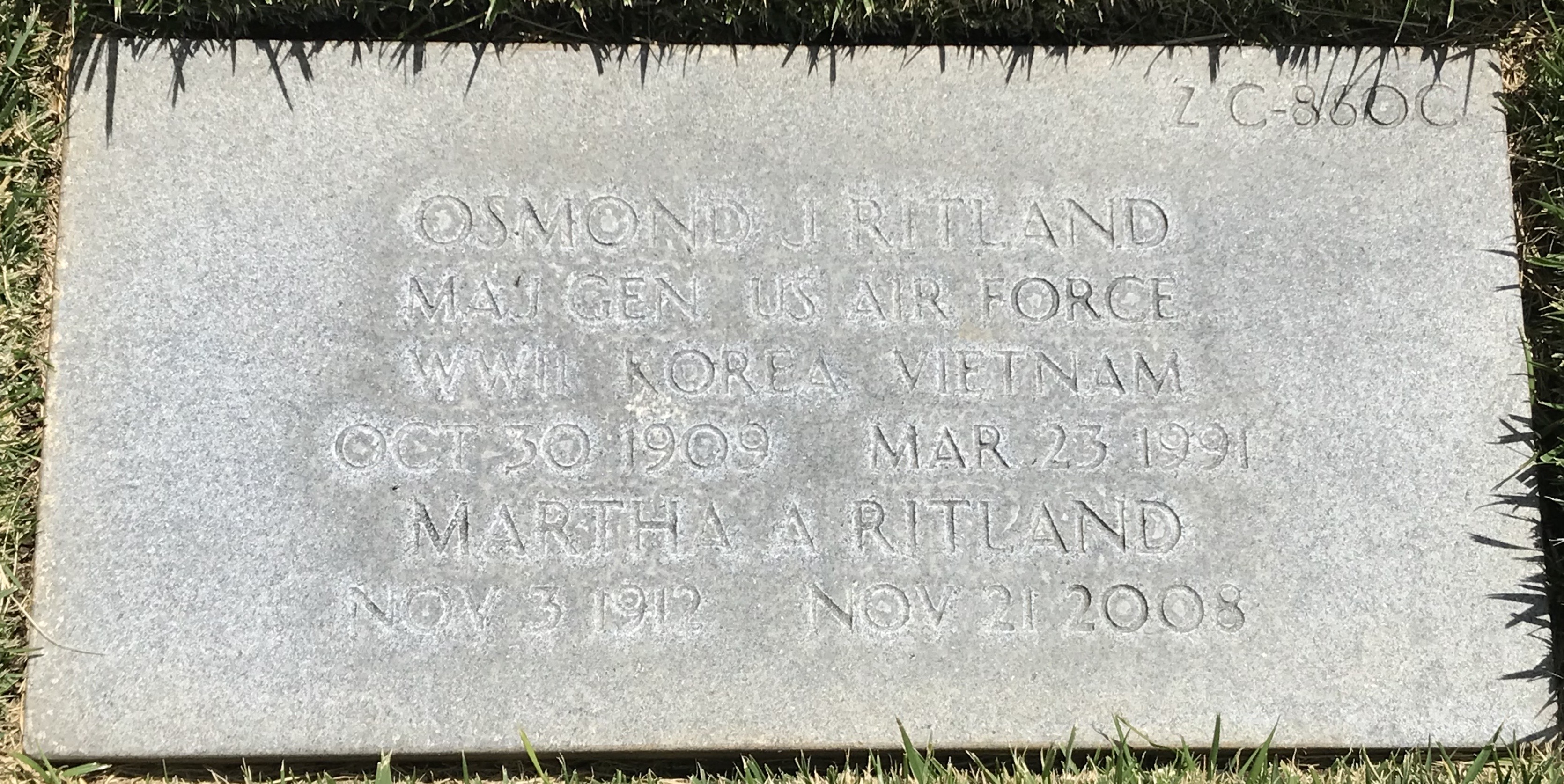Texas, in 1932. He served as a fighter pilot, and flew Army Air Mail from 1933-35. He then left the service to work as a pilot for United Airlines for four-and-one-half years. He reentered the Army Air Forces in 1939, accepting a regular commission, and served as an experimental test pilot at Wright Field Ohio for five years. He transferred to the China Burma-India Theater in December 1944, serving as the commander of the Assam Air Depot, India, until February 1946. Returning to Wright Field, he worked in the development and acquisition of Air Force experimental aircraft and in aircraft research and development.
Major General Osmond J. Ritland organized the 4925th Test Group (Atomic), in 1950. It was responsible for development testing of all equipment needed to attain the Air Force's nuclear weapons capability. In 1954, he served as Chief, Atomic Energy Division, HQ USAF, where he supervised and coordinated all atomic energy matters involving Air Force nuclear programs.
Major General Bernard A. Schriever had General Ritland handle the beginnings of the space effort. In 1956 he was responsible for the day to- day management of the organization and its ambitious Weapon System 117L satellite program, the forerunner of the entire Air Force space program. Following the launch of Sputnik in 1957, General Ritland helped the U.S. start a program to realize an operational photographic reconnaissance satellite employing a recoverable capsule in the spring of 1959.
Following his retirement from the Air Force, General Ritland served as Vice President for Launch for the McDonnell Douglas Corporation for five years. Also, upon his retirement from the Air Force, NASA awarded him its Exceptional Service Medal for his contributions to the Mercury and Gemini Manned Space Flight Programs and the Air Force awarded General Ritland its first Distinguished Service Medal.
Texas, in 1932. He served as a fighter pilot, and flew Army Air Mail from 1933-35. He then left the service to work as a pilot for United Airlines for four-and-one-half years. He reentered the Army Air Forces in 1939, accepting a regular commission, and served as an experimental test pilot at Wright Field Ohio for five years. He transferred to the China Burma-India Theater in December 1944, serving as the commander of the Assam Air Depot, India, until February 1946. Returning to Wright Field, he worked in the development and acquisition of Air Force experimental aircraft and in aircraft research and development.
Major General Osmond J. Ritland organized the 4925th Test Group (Atomic), in 1950. It was responsible for development testing of all equipment needed to attain the Air Force's nuclear weapons capability. In 1954, he served as Chief, Atomic Energy Division, HQ USAF, where he supervised and coordinated all atomic energy matters involving Air Force nuclear programs.
Major General Bernard A. Schriever had General Ritland handle the beginnings of the space effort. In 1956 he was responsible for the day to- day management of the organization and its ambitious Weapon System 117L satellite program, the forerunner of the entire Air Force space program. Following the launch of Sputnik in 1957, General Ritland helped the U.S. start a program to realize an operational photographic reconnaissance satellite employing a recoverable capsule in the spring of 1959.
Following his retirement from the Air Force, General Ritland served as Vice President for Launch for the McDonnell Douglas Corporation for five years. Also, upon his retirement from the Air Force, NASA awarded him its Exceptional Service Medal for his contributions to the Mercury and Gemini Manned Space Flight Programs and the Air Force awarded General Ritland its first Distinguished Service Medal.
Inscription
US AIR FORCE MAJ GEN WORLD WAR II, KOREA
